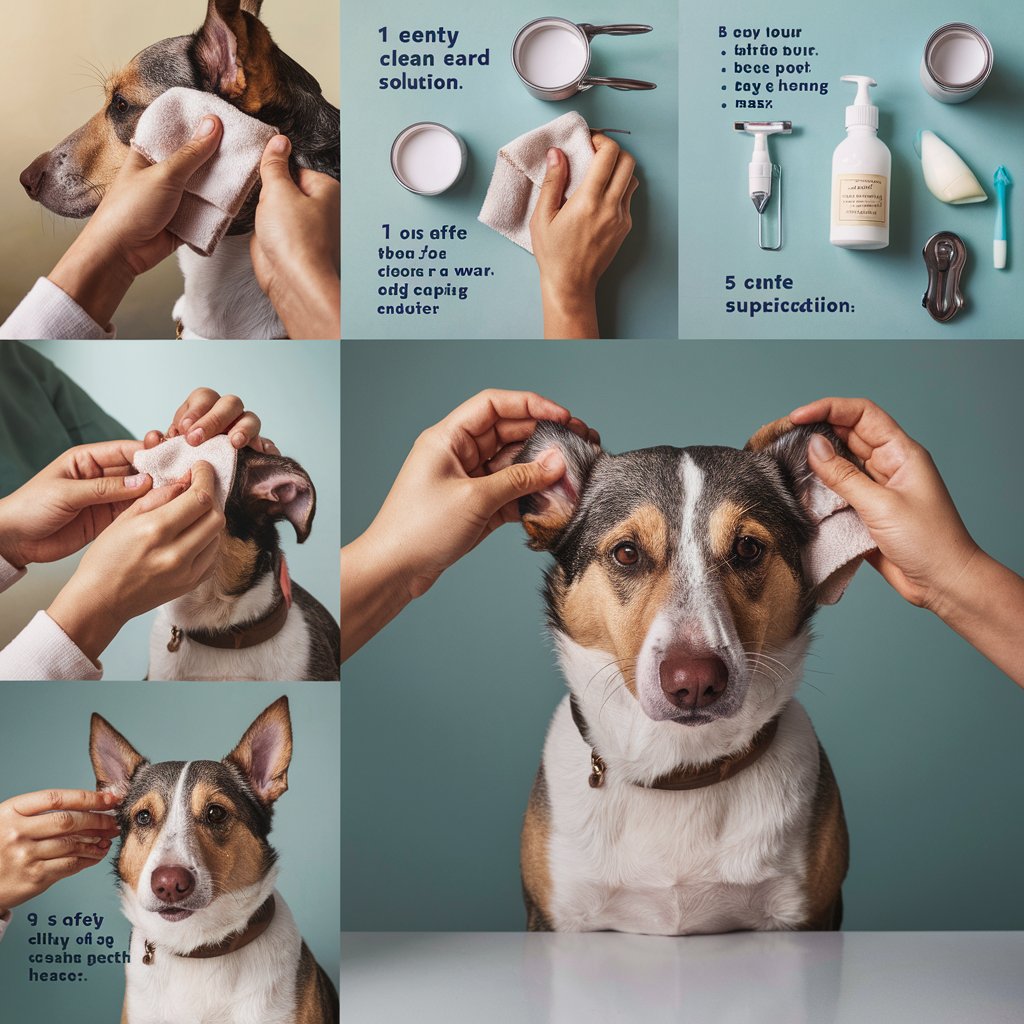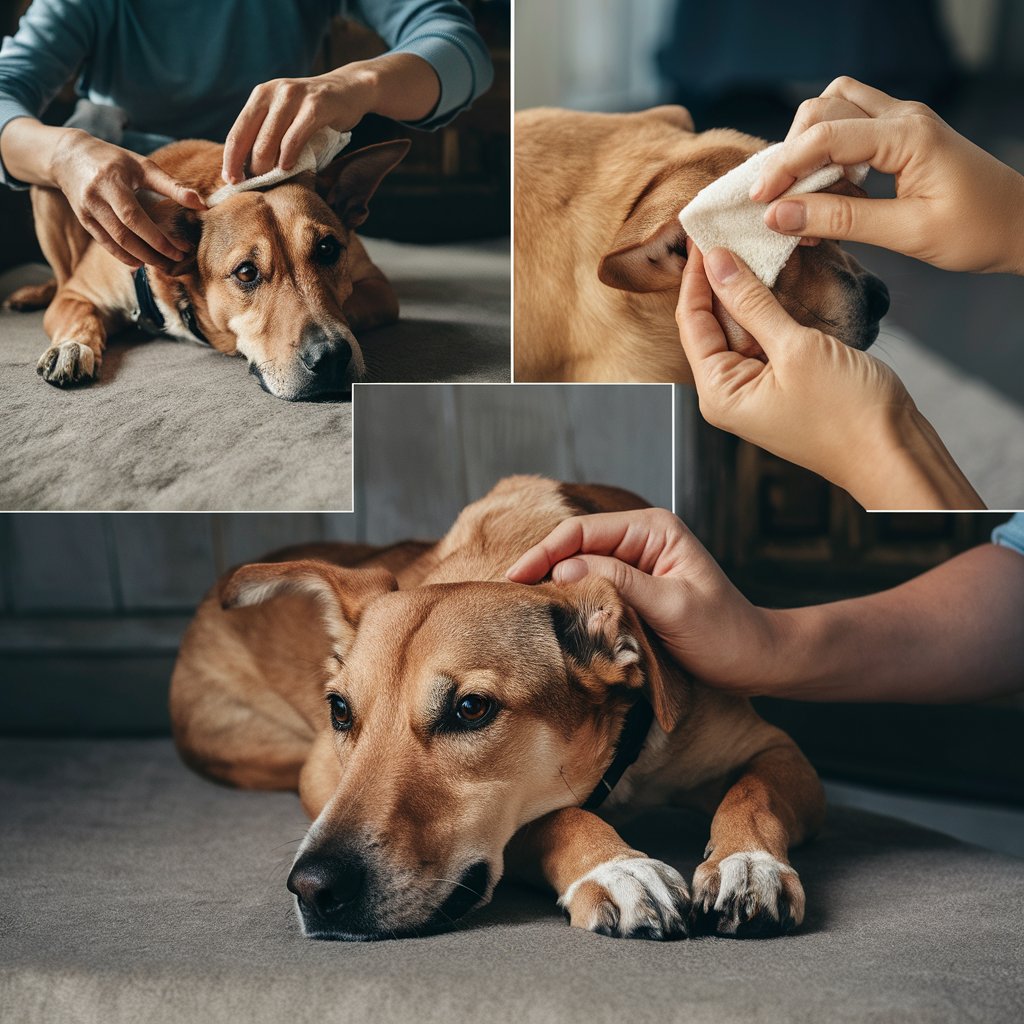Canine earwax is a common topic among pet owners who want to keep their furry friends happy and healthy. Like humans, dogs produce cerumen, or earwax, which helps to keep their ears clean by trapping dirt and debris. In general, some earwax is normal and nothing to worry about. Overgrowth of earwax can indicate illness and may necessitate additional attention. In this article, we’ll explore what normal earwax looks like, share tips for cleaning your dog’s ear safely, and explain when it’s a good idea to check with the vet. We keep the ears clean and your dog will be fine.

How ear build in dog ear
Earwax accumulates in the dog’s ear as a natural way to keep the ears clean. Special glands in the ear canal produce wax and oils that together form earwax. This wax traps dirt and dust, preventing them from entering the eardrum and causing problems. The wax gradually moves from the inner ear to the outer ears as dogs move their heads and ears, carrying dirt with them. Earwax usually dries and falls off on its own. It’s important to consult your veterinarian if your dog has huge pieces of earwax or is experiencing discomfort.
What causes excessive ear wax in dogs
Excess earwax in dogs can be caused by several reasons. An increase in the amount of wax produced by a dog can be caused by allergies like pollen, dust mites, and specific foods. When you have an ear infection and either bacteria or yeast, it can lead to wax buildup. Ear mites, which are tiny parasites, can irritate the ears and increase wax production. Poor ear hygiene can cause wax to build up over time. Dogs that swim frequently or live in humid environments may experience increased earwax production due to high humidity. Certain breeds with wide ears or narrow ear canals are more likely to have this problem. Hormonal problems, such as hypothyroidism, can affect a dog’s ear health and increase wax. The presence of foreign objects or debris in the ear can result in irritation and buildup of wax.
Can ear wax build-up cause ear infections in dogs
Earwax can indeed result in infections within the ears of dogs. When the wax accumulates too much it creates a warm, moist atmosphere which is ideal for the growth of bacteria and yeast. This can cause symptoms such as redness, swelling, itching, and a foul smell. If earwax is not cleaned regularly, it can trap dirt and debris, making it more susceptible to infection. Regular cleaning and monitoring of ears is important to prevent earwax and reduce the risk of infection. If you notice signs of an ear infection, such as your dog scratching his ears or shaking his head frequently, it is important to see your veterinarian for proper treatment.

How often should I clean my dog’s ears
In general, clean your dog’s ears about once a month, unless they have special problems or are prone to infections. Be mindful of areas where there is wax accumulation, redness, or irritation. If your dog produces excessive wax or you experience ear problems like head shaking or scratching, it may be necessary to clean your ears more frequently. Use a dog ear cleaner recommended by your vet and gently wipe the visible parts of the ear with a cotton ball or pad moistened with the cleaner. Avoid pushing anything into the ear canal. Seek guidance from your veterinarian for specific instructions that are tailored to meet the needs of your dog.
How do I know if my dog’s ear wax is abnormal
You can detect earwax in your dog by looking at several signs. First, if there is too much wax compared to normal, it may indicate a problem. Abnormal wax can vary in color from the typical tan and appear darker or even a different shade. Abnormally formulated wax may feel thicker, stickier, or have an unusual consistency. A bad smell in the ear is often a sign of an infection or other root cause. In addition to other symptoms, redness or swelling should be noted along with any head shaking or visible discharge from the ears. These signs may also indicate an ear infection. If you notice any of these signs, it is very important to have your dog’s ears examined by a veterinarian immediately to determine the cause and appropriate treatment.
Are there any home remedies for cleaning dog ear wax
Some people use household items to clean their dog’s ears, but they should be cautious. The wax can be made more gentle by using warm minerals or olive oil, which makes it easier to clean. An alternative is to use diluted apple cider vinegar, which helps in eliminating bacteria and cleaning the outer layer of the ear. Some also use diluted hydrogen peroxide to dissolve the wax and keep the ear clean. Coconut oil is also popular for its natural antibacterial properties. Only inserting them into the outermost ear and not into any deeper will cause harm to your dog.
